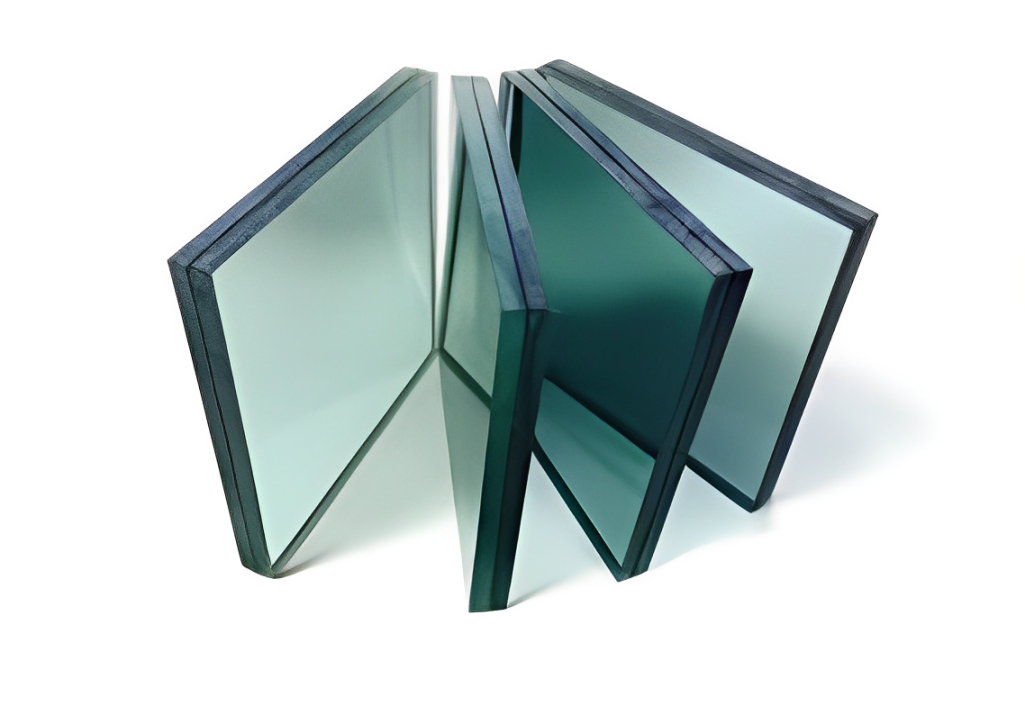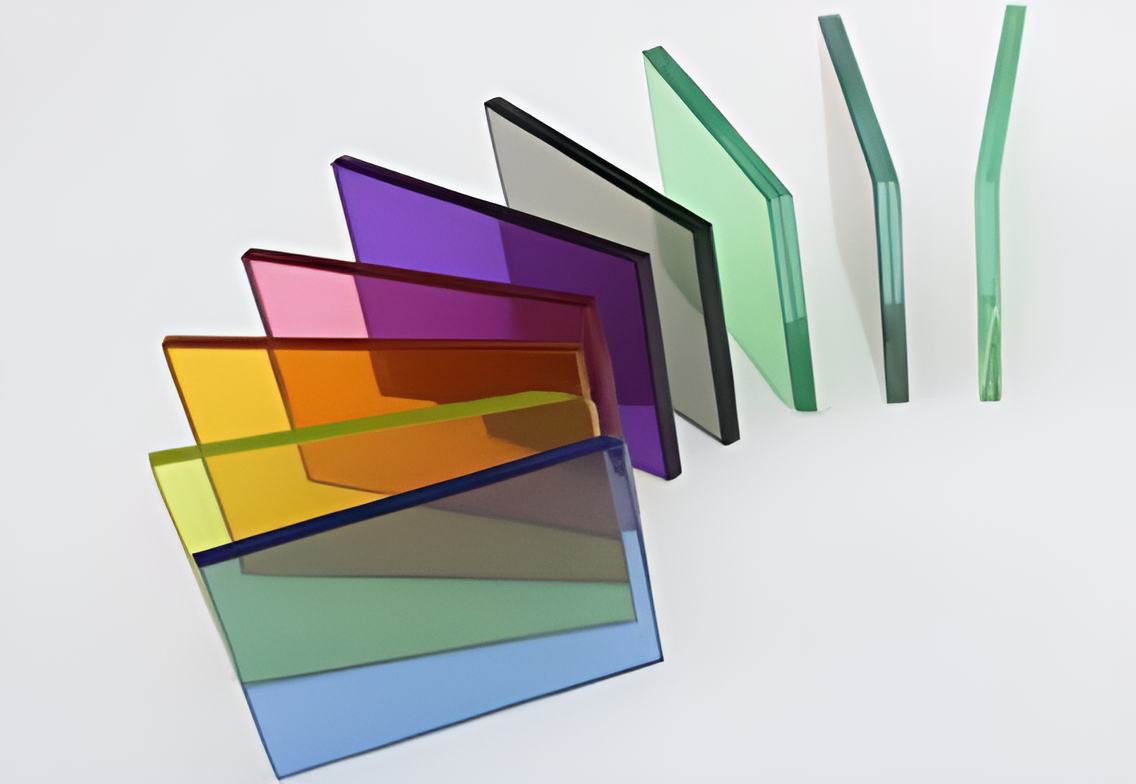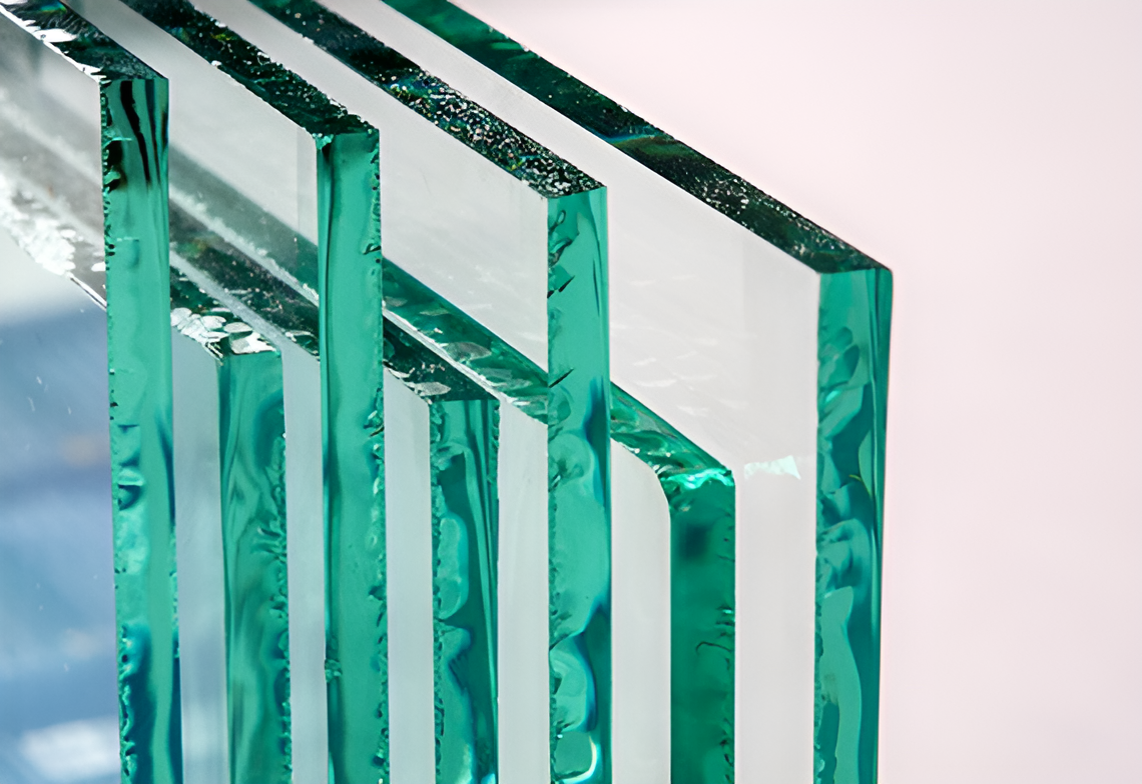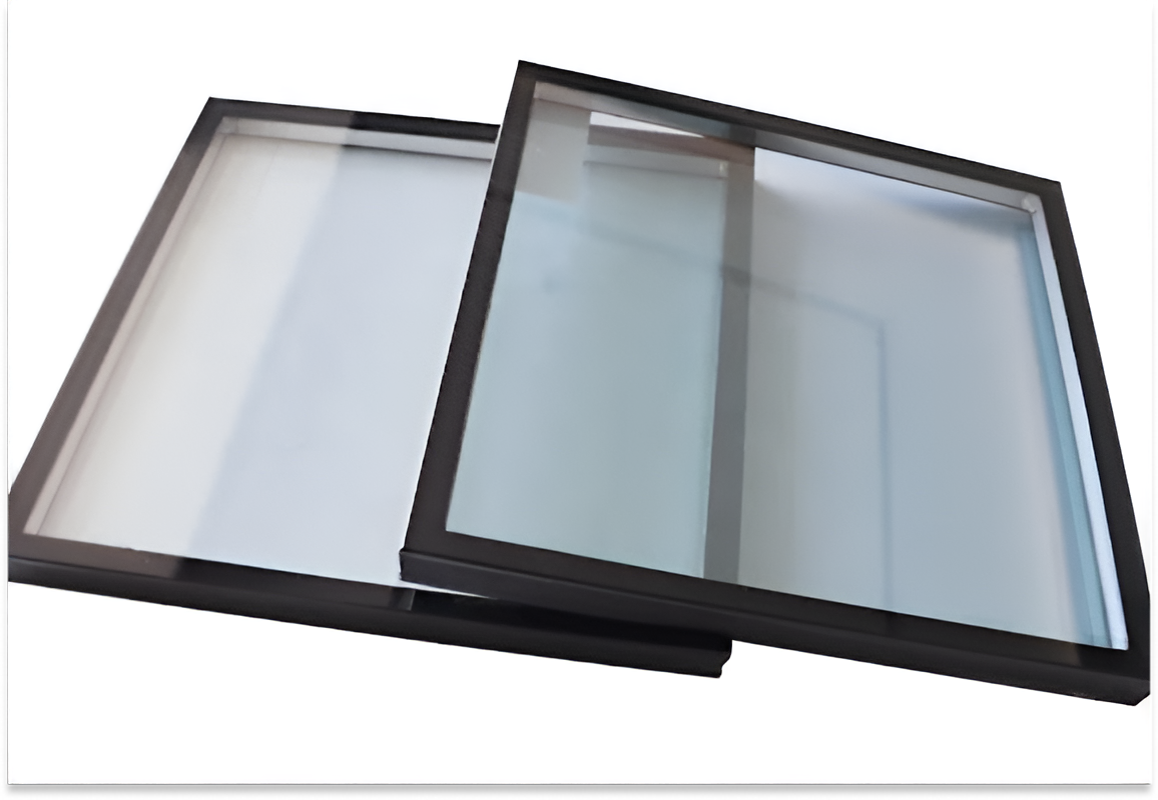"Anmol Bunglow", 1st Floor, Plot No. 2, Mangal Co. Op. HSG Soc.,
Behind Indraprasth Mangal Karyalaya,
Gangapur Road, Nashik - 422005.
Dist : Nashik, Maharashtra (India).

This is the most common type of glass which is
generally available on glass retail shops for use in the buildings.
The stock sheets of glass are cut to size generally on the glass
shop itself and supplied to site for glazing in the windows or
other applications.
Basic float glass is manufactured by melting sand.
Other ingredients such as soda ash, limestone, salt cake and
broken cullet glasses are added to lower the melting temperature
of silica and promote optical clarity of the finished glass product.
Mixed batch of above materials is heated to a temperature of 1450
to 1650º C and formed into large flat sheets by floating molten glass
on molten tin, thus giving it precise flatness and transparency.
It is a normal flat glass to which colour is added
during manufacturing process to achieve tint and solar radiation
absorption properties.
Its absorption properties help diminish energy transmissions
through glass when exposed to strong sunlight. Variations in the thickness
of the glass would yield different performance in terms of light and solar
transmission.
Although darker shades reduce the amount of heat being
transmitted to the interiors, they also reduce the amount of daylight
being transmitted.


Online Coated Float Glass is also a basic clear or body
tined float glass which has been coated with a thin inorganic material in
the high temperature, the treatment of the surface of a moving continuous
ribbon of a basic glass at a stage during its manufacture before it is
cut. These are discussed in more detail under the heading “Solar Control
Glasses”.
Offline Coated Float Glass:
Offline Coating, a secondary process, is a metallic coating on glass by process
in a vacuum atmosphere. Multiple coatings can be applied for better
thermal performance in a variety of colour options. Offline Coated glasses
are of two types:
1. Offline Coated – Temperable after Coating.
2. Offline Coated – Not Temperable after Coating.
Coating surface of the offline coated glass should be
positioned on interior side of the building or within the air gap of insulation
glass unit (IGU). Glass with Low-e properties (silver layer as functional
layer) should always be used with coating positioned within the air gap of IGU
as silver coatings are efficient but prone to oxidation if kept exposed to the
atmosphere
Offline Coating, a secondary process, is a metallic coating on glass by process in a vacuum atmosphere. Multiple coatings can be applied for better thermal performance in a variety of colour options. Offline Coated glasses are of two types:
1. Offline Coated – Temperable after Coating.
2. Offline Coated – Not Temperable after Coating. Coating surface of the offline coated glass should be positioned on interior side of the building or within the air gap of insulation glass unit (IGU). Glass with Low-e properties (silver layer as functional layer) should always be used with coating positioned within the air gap of IGU as silver coatings are efficient but prone to oxidation if kept exposed to the atmosphere
